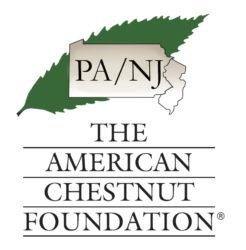Marker-assisted selection with traditional breeding
As noted in the breeding sections, the exact controls for resistance are largely unknown. With the development of markers, scientists can better pinpoint the genetic controls for traits. Once those markers are discovered, they can be used to screen for those traits of interest.
The screening is known as marker-assisted selection. Currently, most screening for chestnuts is done using the “phenotype” or, the outward appearance of the tree. Tree breeders hope that the “phenotype” will correlate, or match, the “genotype”, or genetic makeup of the tree. In the case of breeding for blight-resistance, for instance, if the marker(s) for resistance are known, the inoculation process (link to inoculation section) may not be needed. Instead, scientists could look at the DNA of an individual and see if those genetic locations are included in that individual. If so, that individual would be selected. Otherwise, it would not.
While the targeting of blight-resistance genes is currently the most important, many other traits of interest will be examined through the marker creation process. In the case of breeding for blight-resistant American chestnuts, the other trait of interest would be American character. With markers, it is possible that signals for the different chestnut species could be found, thereby allowing breeders to know almost exactly how much “American” character would be in a given tree, and use that for the purposes of selection.
Genetic markers tend to look at small parts of a genome, and are only useful when they can be found. Sometimes, it’s very difficult to find those markers. Thankfully, continuing advances in the field of sequencing are making it easier to pinpoint genetic controls of traits.
